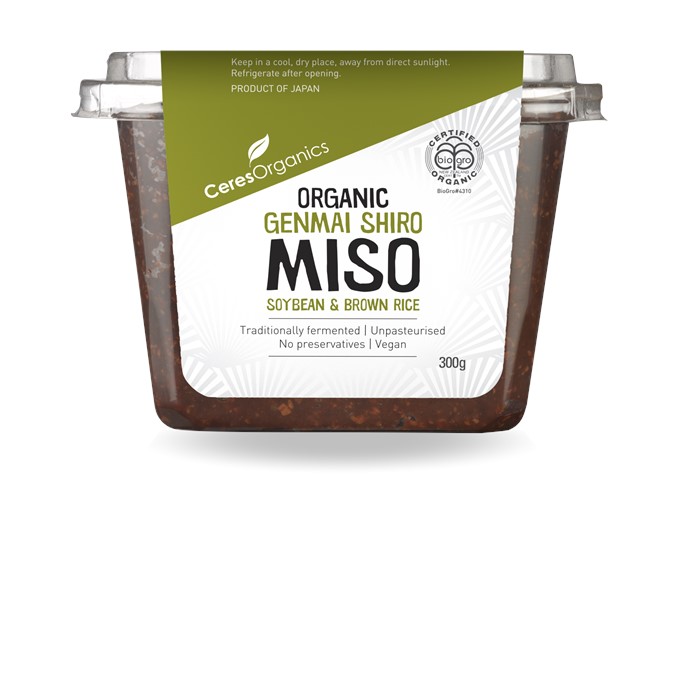Miso Soup
Ingredients
- Unpasteurised organic miso paste – Wholelife Healthfoods opposite Coles in Mareeba sell the brand pictured on this page – be sure that your miso paste says unpasteurised: pasteurised misos are only for flavour, they don’t contain the bacteria from the fermentation process anymore, and these little bacteria are the reason we are taking the miso 😉 And only get miso made with barley or brown rice
- Onions/Leek
- Seaweed (kelp, wakame, kombu, arame) – Wholelife Healthfoods opposite Coles in Mareeba has some seaweed, Essence of Wholefoods will also have some I believe
- Shitake Mushroom (just one, dried NOT fresh, dried)
- Kuzu
- Shallots and/or Ginger, according to the below, or per your taste:
- in autumn/cold weather: Ginger
- in spring/warmer weather: Shallots
- optional – to taste in hotter weather: diced Cucumber and/or Lemon/Lime wedge
- optional – cold pressed sunflower oil, or (non-toasted) cold-pressed sesame oil – Wholelife Healthfoods opposite Coles sell the ones pictured on this page
- optional – any other vegetable from the “vegetables for daily consumption’ list below that you feel like adding
In terms of quantities of these vegetables, go by your preference. We do want there to be quite a lot of liquid still in the soup and if you really love the vegies too, by all means, use a heap of them too. Just be sure that you use enough water to cook them and leave some soup left for ‘drinking’ 😉
Equipment
- stainless steel pot – big enough to make however much soup you want
- wooden spoon
- bowl/pyrex jug – about 1/3 to ½ the size of the pot
- ladel
To prepare
- Chop onions/leek into whatever shape you want
- Cut seaweed (with scissors) into whatever shape you like. If you’re not sure you like seaweed, make the pieces pretty small, like less than 0.5cm x 0.5cm 😉
- Dissolve a teaspoon of kuzu into 1 cup of COLD water
- Chop any other vegetables into whatever size and shape you like, including the shitake
- Finely chop shallots (I actually use scissors for this bit too) and/or grate ginger, or chop really really finely (a ceramic grater is good for this)
- Depending on the weather/your taste:
- cut a lemon/lime wedge
- dice cucumber
To cook
- Choose your pot and fill with enough water to make enough soup
- Place onion/leek, seaweed, shitake, dissolved kuzu mixture and other vegetables if you have them into the pot. You can also sautee your onions (and other veg if that feels good) first in the cold-pressed oil and sea salt, and then add to the soup liquid. Fried onions in particular help with reducing cravings for sweeter things.
- Bring the water to boil, turn back to a simmer and cook the vegetables
- Once vegies are cooked the way you like them, turn the heat down on the stove and ladel 1/3 to ½ the soup liquid into the bowl
- Using the wooden spoon, spoon miso paste into the liquid in the bowl – start with 1/3 inch x ½ inch x 1 inch volume for each cup of water in the soup. As you practice making the soup you’ll start to know how much you want for your taste.
- Blend the paste into the soup liquid using the wooden spoon
- Check that the stove is turned down as low as it goes. It is REALLY IMPORTANT that the miso does NOT boil. Boiling the miso will kill the little bacteria that are gonna keep your gut healthy. So REALLY IMPORTANT: TURN the STOVE right DOWN LOW
- Pour miso mixture back into the soup pot, blessing yourself and the world 😉 and use the ladel to mix/aerate the soup a little: put the ladel into the pot, lift out some soup and the pour the soup back into the pot from a bit of a height – just 5 or 6 times is enough
- Let the soup sit on the low low heat for 3-5 mins now – you’ll be able to see the miso riding the convection currents. If the water starts to boil, take it off the heat immediately, and find a way to reduce the heat of your stove so you can cook the miso without it boiling.
- Toss in the ginger and/or shallots
- Serve to your bowl/mug and add lemon/lime or cucumber if you have them
- Enjoy getting to know your large intestine’s new best friend: miso 😊
If you know that you are short on time as a general rule when you go to make breakfast or dinner, you can do steps 1-3 above to make a vegie soup stock to store in the fridge. You can then just heat this up and do the remaining steps at your mealtime 🧡🥦🥕🙂
Vegetables good for daily consumption are:
- broccoli
- cauliflower
- carrots
- parsnips
- pumpkin – all kinds
- kale
- cabbage – all kinds
- squash/zucchini – all kinds
- leeks
- corn from the cob
- any chinese leafy green vegetable (bok choy, choy sum, chinese broccoli, etc…)

